Barcelona is famed for its extensive collection of masterpieces of 'Moderniste' architecture, another expression of the Art Nouveau movement in France and Belgium, Jugendstil in Austria and others elsewhere.
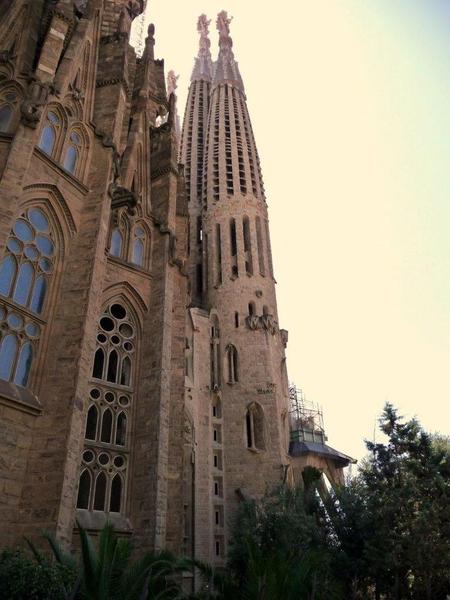
But visitors to Barcelona easily come away with the impression that it's all the work of one man, Antonio Gaudi, author of quite a few of the best, and of certainly the best-known, the still-incomplete Sagrada Familia basilica (above).
And that's a shame, because it misses the opportunity to get to know other architects who shaped the Catalan modernist moment, and especially "Barcelona's Other Architect," Lluis Domenech i Montaner—a contemporary of Gaudi's, at times a classmate, mentor and even rival of Gaudi's. The good news is that there's quite a bit of his work available, and some is more readily available to visit now than for many years. The intricate clock tower above is part of his masterpiece Sant Pau Hospital complex.
This hospital campus—the first hospital anywhere to be built that way—was started in the early 1900s on what was then the edge of the city’s Eixample district. It replaced an ancient Catholic hospital in medieval buildings in the historic center and added new departments funded by Catalan industrialists. Their motivation was in part to show religious faith, in part response to fears of rebellion by Catalan workers and in part as an expression of Catalan nationalism, showing up “backward” Spain as holding Catalonia back.
Domenech's work on the hospital was a real groundbreaker. Rather than just build a large and impressive building, he set out to discover what a modern hospital should be, not just in appearance but in function. He met with doctors and scientists, he traveled to visit hospitals as they existed and how they were evolving.
He wanted to know how they used space, what moods they created for patients and staff, how they could incorporate new ideas in medicine, new ways to prevent infections, and ways to motivate patients to recover and move on. All of that is expressed in the buildings in various ways.
By placing the wards in a number of buildings, all with southern exposure, he was able to guarantee maximum sunlight. Ventilation channels in the walls (many of the fanciful-seeming towers in the pictures are actually hiding ventilators!) and high ceilings helped keep temperatures down in summer. A system of underground tunnels linked all the buildings so food, supplies and staff could be moved around easily (and without contamination).
Domenech i Montaner was every bit as obsessive about his work as Frank Lloyd Wright; his design work extended to all the tile designs, all the furniture…even the sculpture in the gardens surrounding the buildings, where families, patients and staff could sit in good weather. Everything, from colors to design motifs, was meant to suggest moving on and recovery, using upward and diagonal strokes.
As modern and beautiful as it is, even more modern times caught up with Sant Pau; after 1945, many of the big open spaces were divided into small rooms and maintenance fell off. Eventually, a decision was made to build a new hospital on an adjoining site, and by 2009, the last patients were moved from the campus. Fortunately, a decision was made to renovate the old campus as a home for cultural, educational and environmental groups, theatres and more. Ironically, Spain’s economic woes and austerity are threatening the new hospital with closure.
As a hospital, much of the complex was invisible to visitors; On my first visit to Barcelona in 2009, as patients were being moved, we were only able to view the exteriors. On a later visit, I was fortunate enough to have a hard-hat tours of the work underway; today, more extensive visits are possible in the fully-renovated buildings.
Although Gaudi and Domenech i Montaner were both committed Catalan nationalists, as were most of the other architects and artists of their circle, the movement was widespread at the time, under other names in other countries. Art Nouveau in France, Jugendstil in Vienna, Liberty Style, the work of Victor Horta in Belgium, Louis Sullivan and Frank Lloyd Wright in the U.S., all are parts of this movement. In general, this modernism is marked by connections to both new industrial technologies and to incorporation of older design elements linked to local cultures. In Catalonia, that meant especially using Moorish and Gothic motifs.
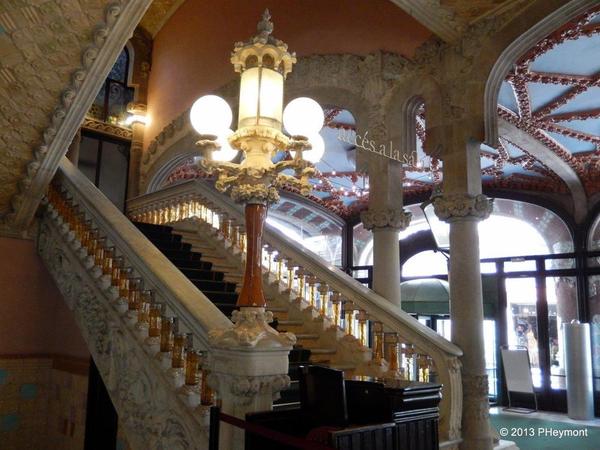 Lobby and stairs to main concert hall of Palau de la Musica
Lobby and stairs to main concert hall of Palau de la Musica
Aside from Sant Pau, Domenech's best-known major work is the beautiful concert hall, the Palau de la Musica Catalana, or Catalan Palace of Music.
Barcelona has a long and rich musical tradition, and the wave of Catalan nationalism gave it a sizable boost. Enough that the leading choral society of the early 20th century, the Orfeo Catalan, which had performed in a variety of venues, was able to raise funds and commission a hall of its own, The Palace of Catalan Music. Both the Orfeo and the hall are still active. The hall is used for concerts of their own, and many other performances, ranging from concert opera to symphonies and chamber music to rock concerts.
Main hall (above), original ticket booth and detail of stage decorations showing Catalan musical traditions (below)
Domenech i Montaner was able to wedge the new building into a fairly small site created by tearing down a convent that belonged to an adjoining church. He placed the orchestra level of the hall above the lobbies so that a skylight could light up daytime concerts. Because the footprint of the building is so limited, he used two very deep balconies to fit 1500 seats above the 800-seat orchestra level. But every seat has a full view of the stage, and the acoustics are incredible throughout.
The grand lobby, beautiful in itself, made a pleasant place to wait for our scheduled 45-minute tour of the building. Ironically, the next-door church whose convent was demolished to make room for the Palace of Music was itself demolished in the 1990s to allow the lobby and cafe to expand into a new glassed-in addition, and to fit a second concert hall, dedicated to chamber music, below the addition.
Above, glass balusters of the grand staircase; below, details of the Castel dels treis Dragons, built as a cafe and restaurant for Barcelona's 1888 world fair. The fair site is now Barcelona's Ciutadella Park.

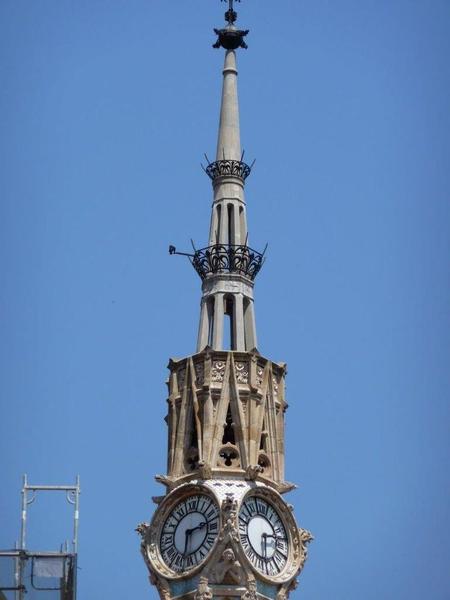
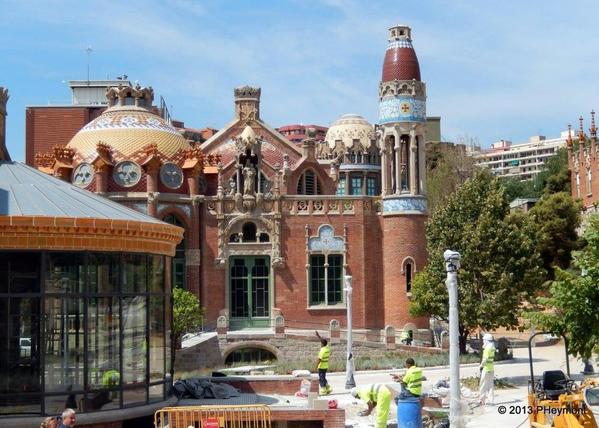
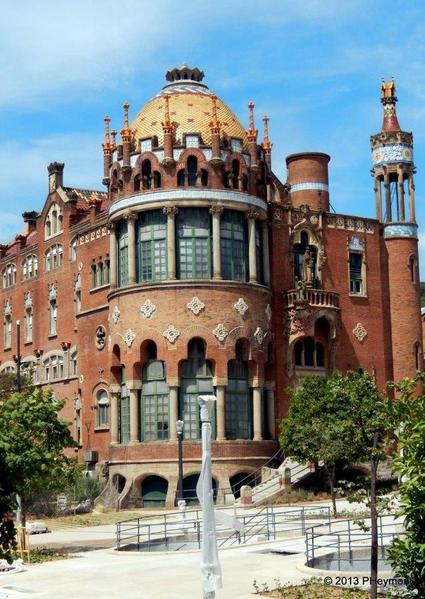
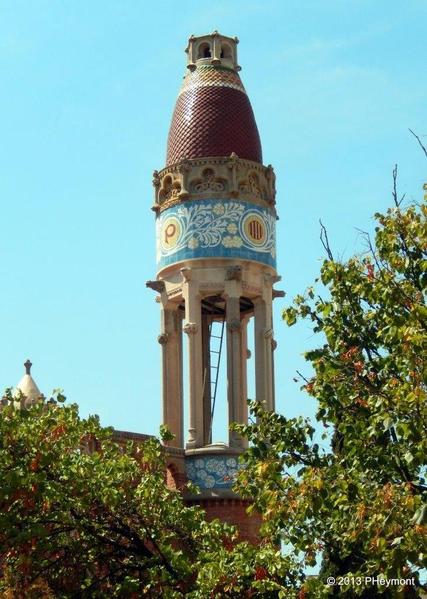
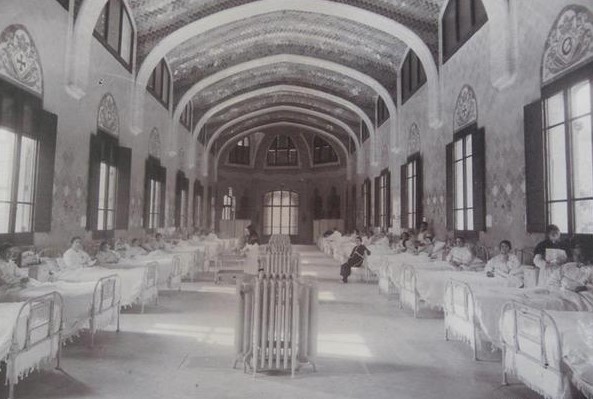
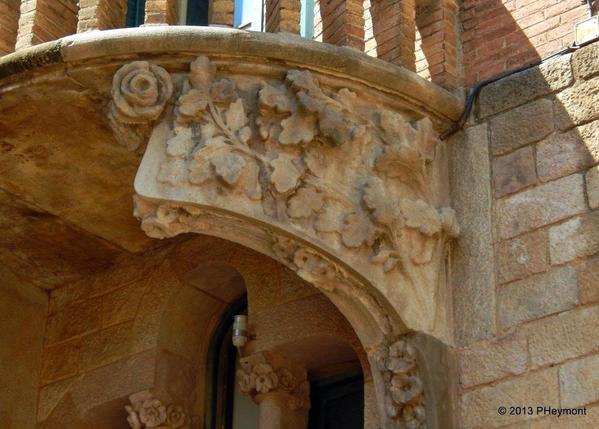
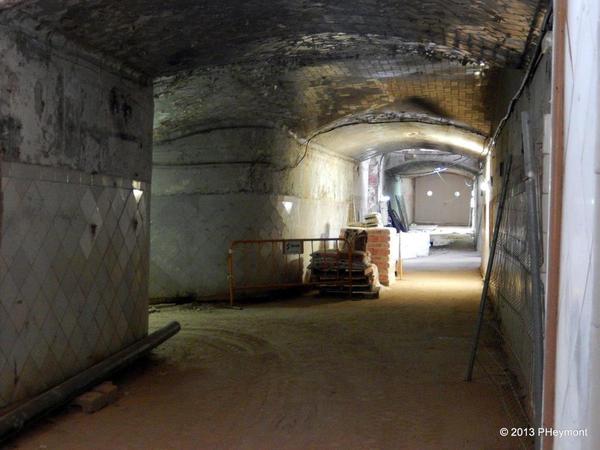
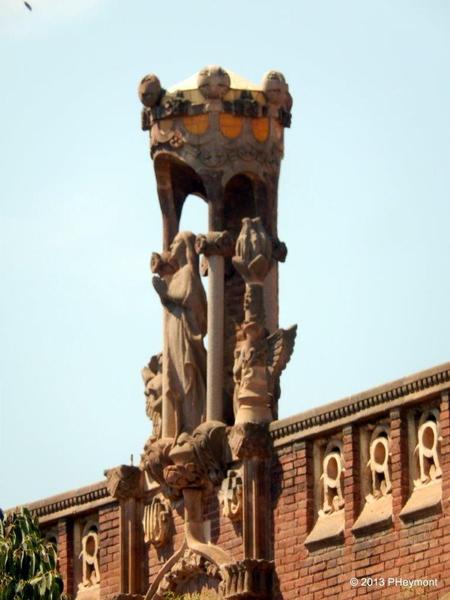
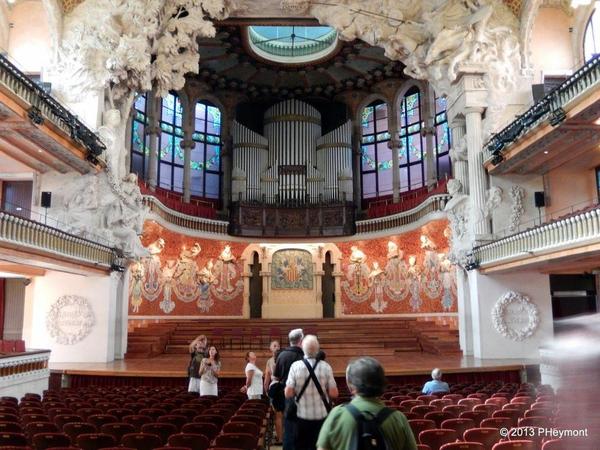
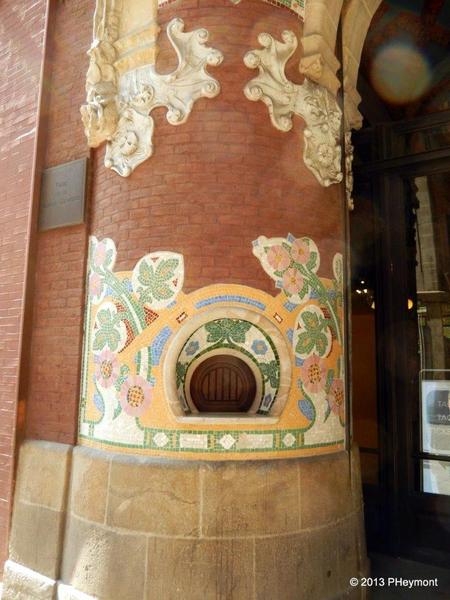
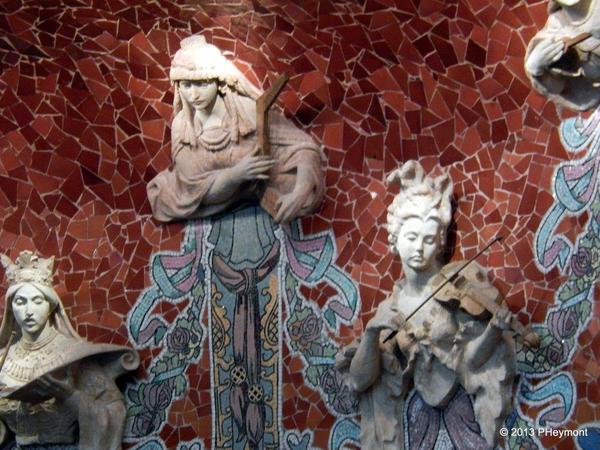

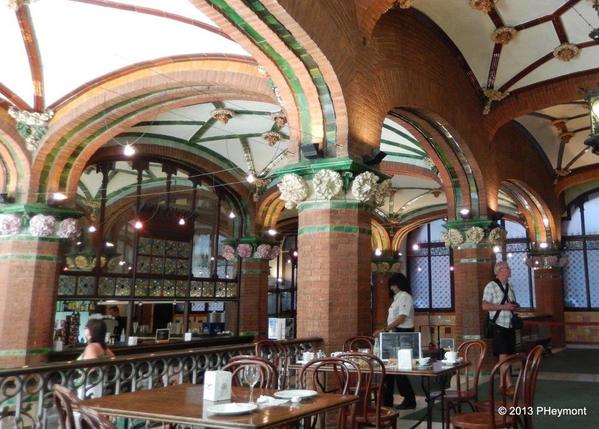
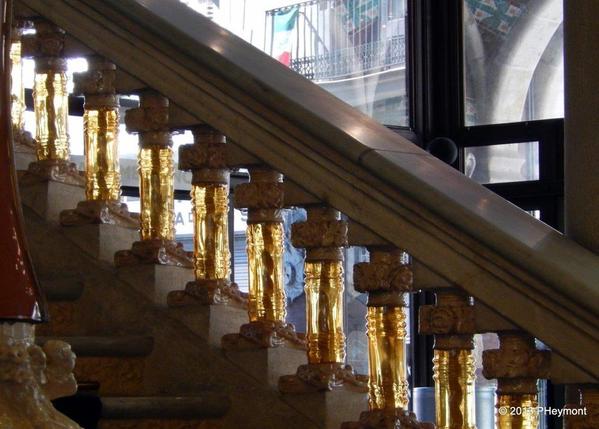
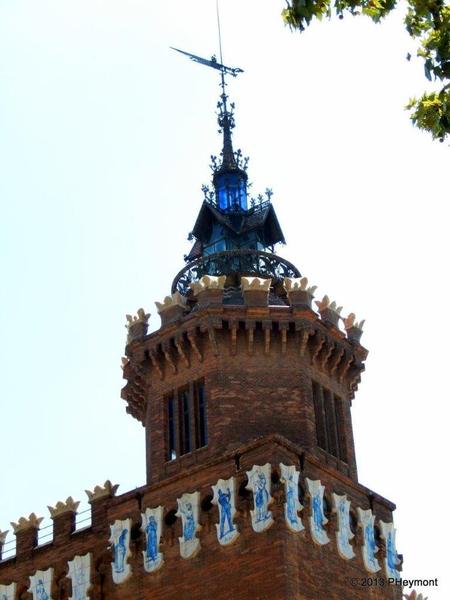
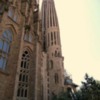

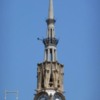
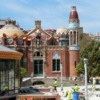
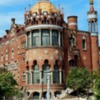
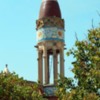
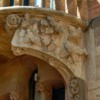
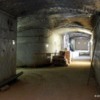
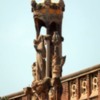
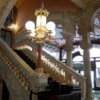
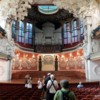
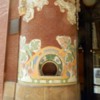
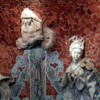
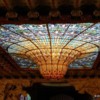
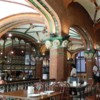
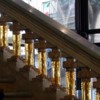
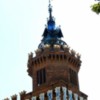
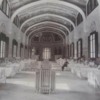
Comments (0)